What is Network Core? A Complete Guide for Beginners and Experts
Introduction
In today’s hyper-connected world, billions of devices—from smartphones to IoT sensors—communicate every second. Behind this seamless communication lies a powerful, invisible system called the network core.
Whether you’re a tech enthusiast, a student, or a seasoned engineer, understanding the network core helps you grasp how data travels efficiently across continents. In this guide, we’ll break it down in a simple, structured, and detailed way.
Understanding the Basics: What is a Network?
Before diving into the core, let’s simplify the idea of a network.
A network is a system of interconnected devices that communicate using rules (called protocols). Networks can be as small as a home Wi-Fi setup or as massive as the internet.
Types of Networks:
- LAN (Local Area Network) – Small, local, like your office.
- WAN (Wide Area Network) – Covers large distances; includes the internet.
- MAN (Metropolitan Area Network) – Covers a city.
- PAN (Personal Area Network) – For personal devices like phones and wearables.
What is Network Core?
The network core is the central part of a digital communication system that manages the high-speed transfer of data between multiple interconnected networks. It acts as the backbone of modern communication infrastructure—supporting everything from mobile calls to global internet traffic.
Simple Analogy
Imagine a country’s transportation system:
- Local roads = access networks (your home Wi-Fi or mobile tower)
- Highways = core network (fast, high-capacity data routes)
Data travels from one location to another through these “information highways” known as the network core.
Key Functions:
- Fast packet switching and routing
- Inter-network communication
- Minimal latency and high availability
- Traffic engineering and congestion control
- Resource allocation and quality of service (QoS)
The core network uses high-speed fiber optics, high-throughput routers, and advanced protocols (like MPLS and BGP) to determine the optimal paths for data to travel across the internet or within service provider networks.
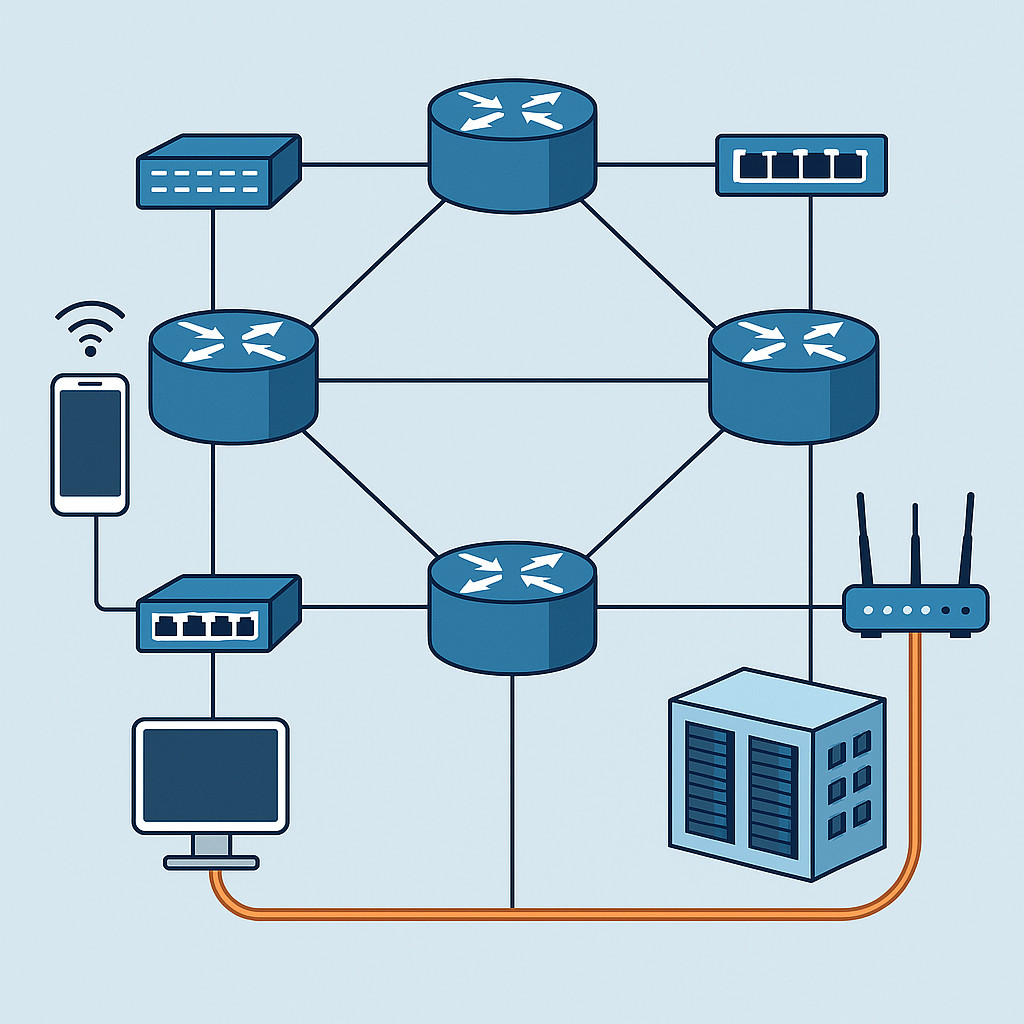
Key Components of the Network Core
A robust core network consists of several sophisticated technologies and components, each optimized for speed, reliability, and scalability.
Core Routers
- Handle data transmission across WANs.
- Support large routing tables, high throughput (40/100 Gbps and beyond).
- Examples: Cisco ASR series, Juniper PTX series.
Optical Fiber Links
- Backbone physical infrastructure.
- Supports Dense Wavelength Division Multiplexing (DWDM) for multiple signal transmission.
- Connects continents through submarine cables.
Switches (Layer 2 and Layer 3)
- Direct packets within the core or between routers.
- Support VLANs, MPLS, and virtual switching technologies.
Network Protocols
- BGP (Border Gateway Protocol): Manages routing between autonomous systems.
- OSPF (Open Shortest Path First): Dynamic internal routing.
- IS-IS: Link-state routing protocol for larger networks.
Data Centers and Cloud Infrastructure
- Act as endpoints for storage and computing.
- Directly interfaced with core networks to reduce latency and increase data access speed.
Core Network vs Access Network vs Edge Network
Understanding these layers is crucial to grasp the flow of data from a user’s device to its destination.
| Feature | Access Network | Edge Network | Core Network |
| Location | Near end-users | Between access and core | Center/backbone of the network |
| Purpose | Device connectivity | Local data processing | High-speed data routing |
| Speed | Moderate | Moderate to High | Very High |
| Examples | Wi-Fi, LTE, Ethernet | Local gateways, micro data centers | Optical backbone, core routers |
| Technologies | 4G/5G RAN, DSL | Fog computing, edge AI | DWDM, MPLS, BGP, SDN |
How the Core Network Works: Step-by-Step
Here’s a deeper look at how a typical communication session travels through the core network:
Step 1: Data Originates at Device
- A smartphone, laptop, or IoT device sends a request (e.g., visiting a website).
Step 2: Passed to Access Network
- The device sends data through local towers (for mobile) or a router/modem (for Wi-Fi).
Step 3: Aggregation and Transmission
- Access network transmits data to a regional aggregation point.
- Data is now ready to be processed by the core.
Step 4: Routed via Core Network
- Core routers evaluate the optimal path using routing tables.
- MPLS or IP switching is used to move packets quickly.
Step 5: Reaches Destination Network
- Data leaves the core near its endpoint—like a data center, another device, or a different access network.
Step 6: Data Delivered
- The recipient device receives the data.
This seamless process usually takes milliseconds, thanks to the efficiency of the core network.
Technologies Used in Network Core
The core network leverages several cutting-edge technologies to maintain efficiency, resilience, and scalability.
MPLS (Multiprotocol Label Switching)
- Tags data packets with short labels.
- Avoids complex lookups in routing tables.
- Supports VPNs and traffic prioritization.
BGP (Border Gateway Protocol)
- Manages how packets move across different networks or Autonomous Systems (AS).
- Backbone of internet routing.
SDN (Software-Defined Networking)
- Separates the control plane from the data plane.
- Centralized controllers dynamically manage data flow.
- Enables automation, traffic engineering, and policy enforcement.
DWDM (Dense Wavelength Division Multiplexing)
- Enables multiple optical signals to be transmitted on the same fiber.
- Multiplies capacity and improves bandwidth utilization.
Carrier Ethernet
- Provides reliable high-speed connectivity over metro and wide-area networks.
- Extends Ethernet beyond LAN.
Importance of the Network Core in Modern Communication
The network core is vital because it:
Drives Speed and Performance
- Supports real-time apps like Zoom, Skype, and online gaming.
- Delivers content via CDNs (Content Delivery Networks).
Ensures Reliability
- Redundant paths and protocols prevent single points of failure.
- Built-in failover and automatic rerouting.
Enables Global Communication
- Acts as a global highway system for the internet.
- Connects data centers, clouds, continents.
Supports Scalability
- Can accommodate exponential user growth and bandwidth demand.
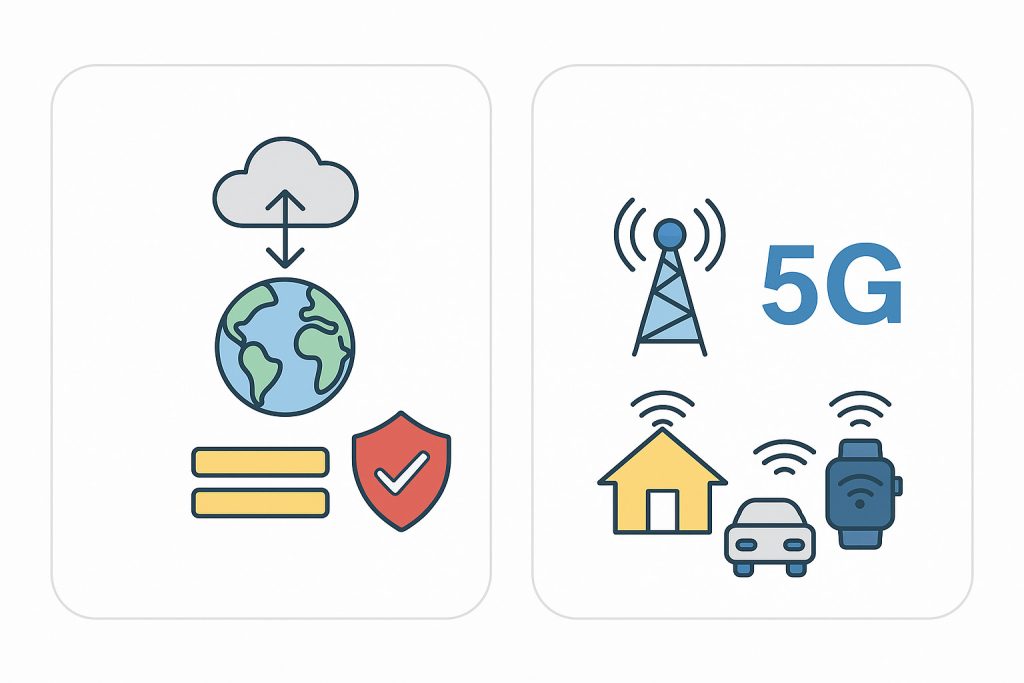
Role of the Network Core in 5G and IoT
In 5G Networks
- The 5G Core (5GC) is service-based and cloud-native.
- Enables:
- Network slicing for customized experiences
- Ultra-low latency for mission-critical apps (like remote surgery)
- High-speed broadband
5G Core Network Functions:
- AMF (Access and Mobility Function)
- SMF (Session Management Function)
- UPF (User Plane Function)
- PCF (Policy Control Function)
In IoT Ecosystems
- Millions of devices connect and communicate.
- The core network:
- Handles massive, simultaneous data streams
- Supports edge integration for fast local processing
- Manages identity, security, and traffic policies
Challenges in Designing a Scalable Core Network
As networks evolve, several challenges arise:
- Massive Traffic Volume
- Video streaming, remote work, and IoT devices generate high volumes of data.
- Latency Sensitivity
- AR/VR, real-time bidding, and connected vehicles require sub-10ms latency.
- Security and Privacy
- The core is a prime target for cyber-attacks (e.g., DDoS, route leaks).
- Cost and Complexity
- High-end routers and optical links are expensive.
- Requires skilled engineers and ongoing maintenance.
- Interoperability
- Legacy and modern systems must work together.
- Protocol and vendor compatibility is essential.
Network Core Security: Why It Matters
A secure core network protects against disruptions and data theft.
Threats Include:
- DDoS attacks: Overload the network with fake traffic.
- Routing attacks: Hijack traffic using false route advertisements.
- Traffic interception: Man-in-the-middle attacks or surveillance.
Security Strategies:
- Encryption: Encrypt packets during transit (IPSec, TLS).
- Zero Trust: Authenticate everything, even internal traffic.
- Firewalls and IDS/IPS: Monitor and filter malicious traffic.
- AI-Powered Detection: Identify anomalies in real-time.
Future of the Network Core
Technology is advancing rapidly, and so is the network core.
Emerging Trends
- Cloud-Native Core: Deployed on public or hybrid clouds for scale and agility.
- AI-Driven Optimization: Self-optimizing networks reduce manual intervention.
- Quantum Networking: Ultra-secure and fast data transfer.
- 6G Core Development: Preparing for even faster and more intelligent networks.
- Edge-Core Integration: Distributed intelligence between edge and core for real-time decisions.
Real-Life Applications of Network Core
Streaming Services
- Netflix and YouTube depend on global core networks to deliver buffer-free 4K content.
Smart Cities
- Sensors in traffic, lighting, and utilities send data via the core for central analysis.
Telemedicine
- Real-time medical consultations and remote surgeries rely on ultra-reliable, low-latency networks.
Autonomous Vehicles
- Communicate with control systems and each other through ultra-fast core networks connected to 5G towers.
Banking and Finance
- Trading platforms and mobile banking require high-speed and secure data routing.
Frequently Asked Questions
Is the network core only used in mobile networks?
No, the concept applies to all types of networks—mobile, broadband, enterprise, and even the global internet.
Can a network function without a core?
Small networks might not need a dedicated core, but large-scale communication (like the internet or 5G) is impossible without it.
Does 5G have a separate core?
Yes, 5G uses a cloud-native core called the 5GC (5G Core), which is more advanced than 4G LTE core (EPC).
How is a core network monitored?
Through Network Management Systems (NMS), AI/ML tools, and real-time analytics platforms like Prometheus, Grafana, or Cisco DNA Center.
See also: Network Switch and Router Difference Explained: Comparison
Final Thoughts
Understanding what is network core bridges the gap between everyday internet use and the complex backend infrastructure that powers it.
For non-technical readers, think of it as the expressway that ensures smooth travel for your data. For technical folks, it’s the heart of modern communications where speed, precision, and efficiency are non-negotiable.
As the world moves towards 5G, smart cities, and the Internet of Everything, the core network will only grow in importance. Investing time to understand it today ensures you’re prepared for the networks of tomorrow.
See also: How to Use IoT Device Over Internet: A Beginner’s Guide
16. Summarize Video on Network core
Was this ‘What is Network Core’ guide helpful?
If you want more beginner tutorials, project ideas, or step-by-step videos, check out our IoTDunia Youtube Channel and explore more on iotdunia.com.





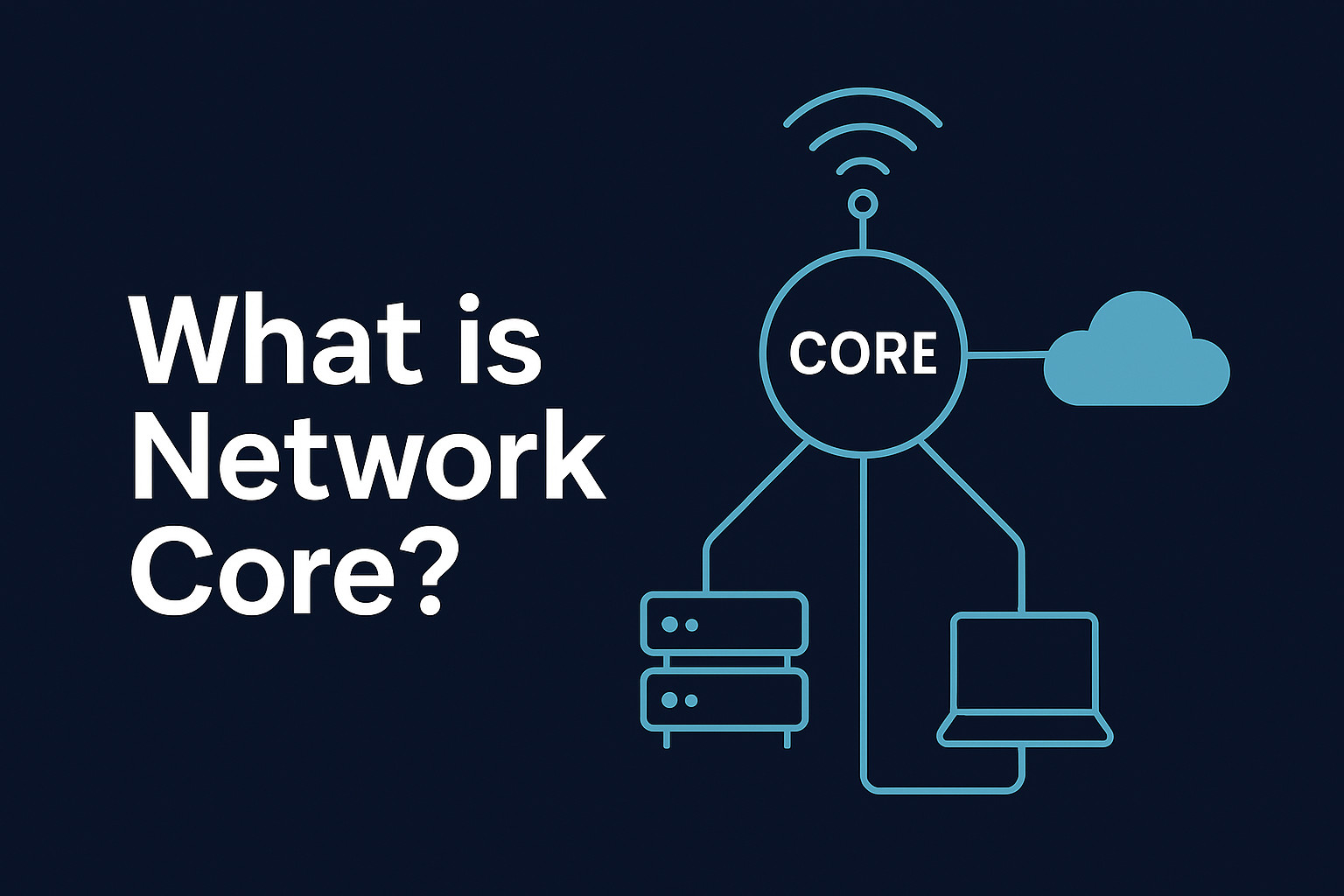

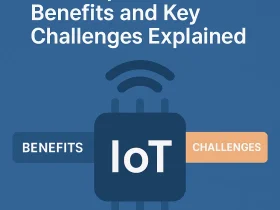
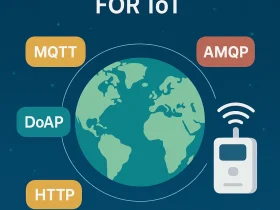
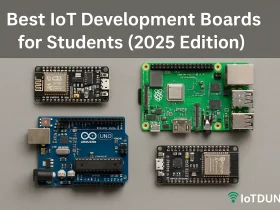
Leave a Review